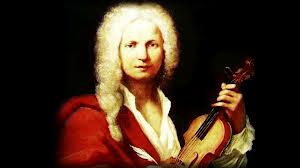The Four Seasons (Le quattro stagioni) is undoubtedly one of the most iconic and beloved compositions in classical music. Written by the Italian Baroque composer Antonio Vivaldi in the early 18th century, this collection of four violin concertos remains a staple in concert halls, films, and recordings around the world. Each concerto musically depicts a different season of the year—Spring, Summer, Autumn, and Winter—offering an extraordinary blend of technical brilliance, expressive depth, and vivid storytelling.
Historical Background
Antonio Vivaldi (1678–1741), a Venetian priest and virtuoso violinist, composed The Four Seasons around 1720, and it was first published in 1725 in Amsterdam as part of a collection titled Il cimento dell’armonia e dell’inventione (The Contest Between Harmony and Invention), Opus 8. This groundbreaking publication contained 12 concertos, with The Four Seasons comprising the first four.
What set The Four Seasons apart from other instrumental works of its time was its programmatic nature—each concerto was accompanied by a sonnet, likely written by Vivaldi himself, that described the scenes and emotions evoked in the music. These literary texts serve as guides, helping the listener follow the story within each season.
A Musical Portrait of Nature
Each concerto in The Four Seasons is composed in three movements (fast–slow–fast), and through brilliant orchestration and virtuosic writing for the solo violin, Vivaldi painted a vivid musical portrait of nature’s cycles.
- Spring (La primavera): Birds chirp in joyful trills, gentle breezes blow, and a shepherd sleeps while his dog barks in the background. The music is light, fresh, and celebratory.
- Summer (L’estate): Oppressive heat bears down in slow, tense melodies, interrupted by violent storms represented by rapid scales and thunderous string tremolos.
- Autumn (L’autunno): Harvest celebrations and dancing peasants come to life in rustic rhythms, and a drunkard stumbles through the middle movement. A hunt with horns and barking dogs closes the piece.
- Winter (L’inverno): Shivering in the cold, slipping on ice, and seeking warmth by the fire—all are captured in sharp contrasts and delicate effects that make the chill almost tangible.
Innovation and Influence
At the time of its publication, Vivaldi’s The Four Seasons was innovative in its use of descriptive music. Though not the first to write programmatic pieces, Vivaldi was one of the earliest composers to achieve such vivid narrative imagery using purely instrumental music. The close relationship between the musical material and the accompanying sonnets was groundbreaking and would influence later composers, including Beethoven and Berlioz, in their use of musical storytelling.
Moreover, the concertos showcased Vivaldi’s deep understanding of the violin’s capabilities. As a teacher at the Ospedale della Pietà, a Venetian orphanage with a strong musical tradition, he wrote much of his music for the talented young women in his care. His teaching experience allowed him to push the boundaries of violin technique, making these concertos a challenge and a joy for performers.
Legacy
Today, The Four Seasons continues to captivate audiences with its energy, lyricism, and vivid imagery. It has been recorded countless times, interpreted in styles ranging from historically informed performances to jazz and electronic adaptations. Its themes have appeared in films, commercials, and popular culture, proving the timeless appeal of Vivaldi’s masterwork.
From its 18th-century origins to its 21st-century prominence, The Four Seasons stands as a testament to the power of music to evoke emotion, tell stories, and transcend time.


Comments are closed